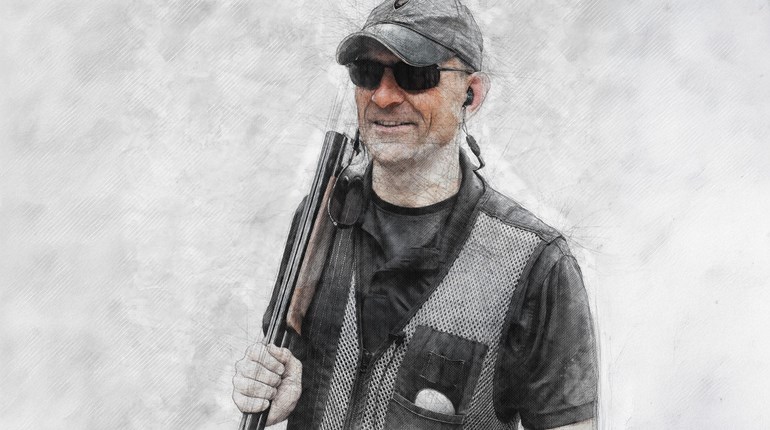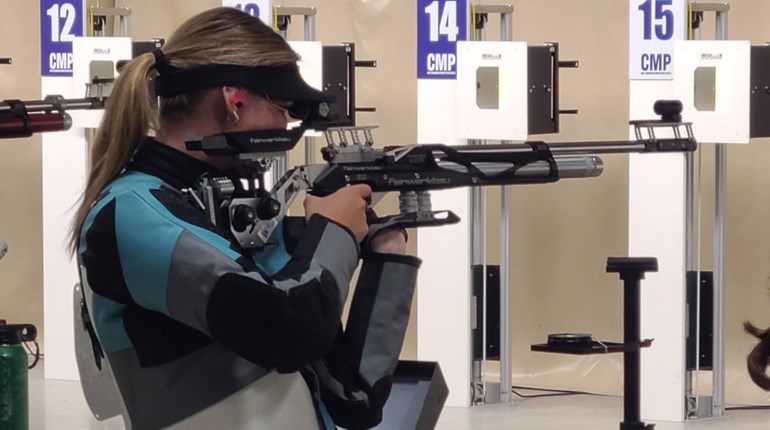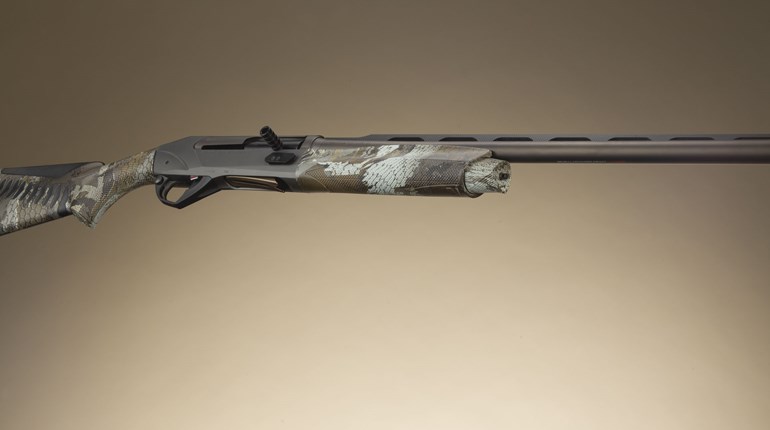
From the vault: Mental training techniques for competitive shooters with 1983 and 1984 National Silhouette Smallbore Rifle Champion John Rost. As transcribed from a 1984 NRA National Silhouette Championship seminar where Mr. Rost was a panelist.
Mental Techniques for Shooting
by John Rost
I'm going to talk about the general guidelines I have developed for my personal mental training program. Most of the techniques I use I learned from reading, experience or from Coach Ed Etzel at West Virginia University. I have taken these ideas, tried them out, and adopted the ones that work best for me. (Read about Coach Ed Etzel—Ed.) I use the same program for sports and at work; and when I was in college, I used it for taking tests. It's very valuable when you become aroused or full of anxiety and are uncomfortable with the feeling. When this happens, you can rely on your good old psychological routine.
The first thing I'm going to mention is cognitive rehearsal. Before this competition, I spent a lot of time thinking about shooting. I didn't just show up on the firing line and decide I was going to shoot well. If you look at my scorecard, you will find these are the best scores I have ever shot. In fact, the best five scores I have ever shot have been in national competition. I spend a lot of my training time away from the range in cognitive rehearsal.
To me, cognitive rehearsal basically means fantasizing. When you have free time or are lying in bed before you go to sleep, you can review and rehearse your shooting routine and visualize yourself shooting the perfect shot. When I shoot a shot, mentally or in reality, I follow a prescribed sequence or routine.
Many people will say they have a mental problem with their shooting. There are so many things you can think about when you are shooting that you must sit down and decide what the best things to think about are. I can't tell you exactly what you should do since each individual is different, but I have found a routine that helps me to perform at a consistently higher level.
- LOAD
- PICTURE A PERFECT SHOT
- RELAX AND SHOULDER THE RIFLE
- HOLD
- (develop a pattern if possible)
- FIRE
The first thing I do, after the ready command, is load the rifle. When the RO says, "Load," my bullet is near the chamber, and I immediately load the gun. That time is precious. You have 15 seconds to prepare, and that is the command for me to imagine in my mind a perfect sight picture. If I'm shooting a ram, I imagine what a perfect sight picture would be. It's very vivid in every detail. I'm talking about imagining the trees on the side, seeing the animal and feeling the presence of the people around me. I'm concentrating so hard on the picture of that perfect shot that you could probably shout in my ear and I wouldn't jump.
This takes training. You can't start the day before a match and get to the point where this is going to help you. It takes a lot of time, effort and discipline. You have to think about that perfect sight picture and be able to bring it into your mind very easily.
Seeing that perfect sight picture mentally not only helps you to remember what you're there for, but also helps you to execute the shot when you see that perfect picture in your sight. A lot of what I've read says that when you picture something in your mind, your subconscious can pick it up very quickly and your reaction time will be increased. When you see that perfect picture in your sights, you are going to shoot faster than you would if you were thinking about something else.
When you have worked on seeing that perfect sight picture, you will have increased your reaction time and also have a very good mental picture of what you are going for. It's common in competition to get nervous and have your hold get more wobbly than usual. When that happens, you will be able to tell yourself you know you can hold better, and that attitude will help you to come back to the perfect hold.
When you are holding on the animal and are aroused and nervous, there are some common relaxation techniques that may be helpful. A good deal of information on the subject is available at your local libraries and bookstores. (This article was written long before Google, we suggest searching online first—Ed.) In progressive relaxation, you begin by tightening up the muscles in your hand or fingers and then relaxing them. Note the feeling when you relax so you have a sense of what relaxation is. Slowly work up your arm to your shoulders and then down to your legs. Feel each part of your body tensing and relaxing. Finally, when you go through all of your body muscles, you let go completely and feel very relaxed.
These techniques can be adapted for use while shooting. There is not reason why your buttocks should be tight when you are standing; your left arm is working; the triceps are working; but if your position is correct, your biceps should not be working. You can identify certain muscles you use when you shoot and be sure no others are tense.
Another more advanced method of progressive relaxation is the use of imagining characteristics to relax. Personally, I like to think of a stick of butter on a plate out in the sun. The butter is slowly melting. The whole thing is becoming lower and lower. Pretty soon the whole plate is a flat dish of liquid. You actually become the butter and become very relaxed. You might also imagine you are at the ocean. It's possible to imagine these things briefly so your body is in a relaxed state. Breathing can also be used to help you relax. You can make relaxation part of your routine.
Since you only have 15 seconds, you must combine relaxing and shouldering the rifle. By the time my rifle comes up and the RO says, "Fire!" I have relaxed and gone through my mental routine so I'm ready to shoot.
My trigger control is similar to the one Col. Wigger described. Most of the time, my hold is not good enough to hold dead center on the animal. My hold settles a bit too low, then I move it up and shoot. So, as I start pulling the rifle up, I concentrate on my hold. My hold has a definite pattern which I can count on without question. Because I can do almost everything on my list no matter where I am, I have almost removed external actors from my shooting routine. I can be on this range or at another; it doesn't matter. There are no environmental factors involved. I concentrate on my hold and what I have imagined. When the steps are complete, the shot is gone. If you train diligently to see that perfect sight picture on each animal and practice it, you will find your gun almost shoots itself. It's no longer a conscious response.
Although I've only been shooting silhouette for two years, I learned this technique through shooting air rifle and smallbore 3-position competition. The gun goes off by itself; you no longer have to think about it. You know subconsciously what you need to do, and your body is capable of doing it. Your body knows how to shoot 10-in-a-row, it's just a matter of occupying yourself with a formal structure so you don't take fear trips into the future or the past. You don't want to think about winning; you don't want to think back to past experiences. The last thing you want to think is, "I was in this position before and missed my last three rams." By keeping yourself actively involved in the routine you have systematically developed, you won't have to worry because those thoughts will never enter your mind. You have to do this actively between each shot because in silhouette there is no lag time between rounds. You shoot five-in-a-row and then relax. In smallbore, it's different because you may have to wait for a wind change. Silhouette is convenient because you don't have time to think or worry about anything.
See more: The Mental Game: Getting Back "In The Zone"



































